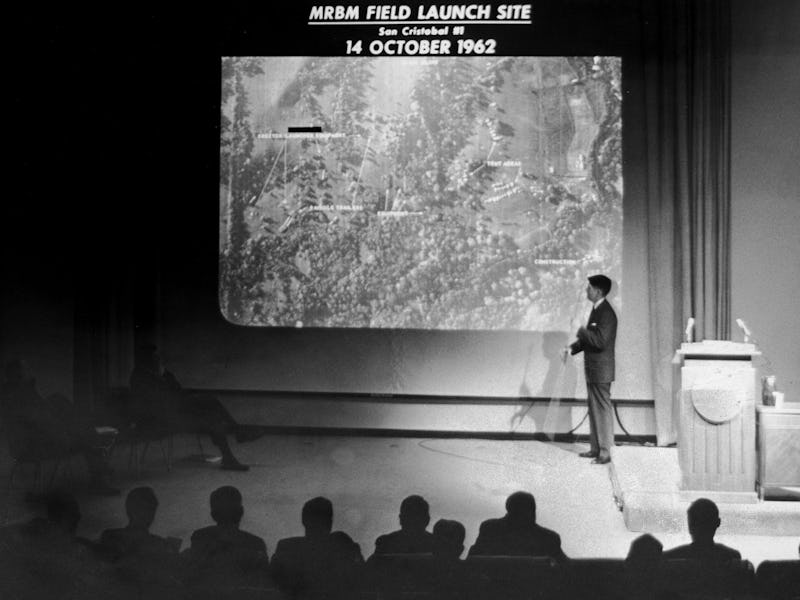A Solar Storm Almost Started World War III
A new study details how a 1967 flare-up by the sun almost tricked the U.S. into attacking the Soviet Union.

The Cold War was filled with nuclear annihilation close-calls: There was the ‘62 Cuban Missile Crisis, the NORAD Computer Glitch in ‘70, the Nuclear False Alarm of 1983, and likely many we’ll never know about. But there’s one incident that has gone under the radar for decades. A new paper to be published in the journal Space Weather finally paints a detailed portrait of a 1967 solar storm that almost spurred the U.S. Air Force to attack the Soviet Union and potentially ignite World War III.
Here’s the deal: On May 23, 1967, the United States noticed its surveillance radars near the poles were jamming up. Naturally, defense officials assumed it was the Soviet Union preparing to attack American soil — so the Air Force began to make its own preparations to strike the Russians.
Problem was, the Russians were not to blame. The culpable party was the sun, which was in the midst of a particularly nasty solar storm. When the sun is producing major flares, the resulting energy can charge up nearby particles and cause electromagnetic disturbances that affect the ionosphere — the part of the Earth’s atmosphere that helps propagate radio wave emissions over large distances.
A view of the Sun on May 23, 1967, in a narrow visible wavelength of light called Hydrogen-alpha. The bright region in the top center region of brightness shows the area where the large flare occurred.
Although solar activity was still not widely understood, by the 1950s the U.S. military knew how eruptions on the surface of the sun could hamper communications on Earth. By the following decade, the Air Force established the Air Weather Service to regularly monitor the sun for solar flares.
A few days before the 1967 storm, space weather forecasters began observing a strange group of sunspots popping up the surface of the sun, and predicted that a large flare was imminent. Lo and behold: On May 23, that flare burst onto the cosmic scene.
All three of the country’s critical radar sites in the Northern Hemisphere — designed to pick up any onslaught of incoming Soviet missiles — stopped working. Intelligence officials in America considered the radar jam was an act of war.
Fortunately, Colonel Arnold L. Snyder, a solar forecaster at NORAD’s Solar Forecast Center, was on duty that day. When asked if there was any solar activity occurring that day, he recalled “responding with excitement, ‘Yes, half the sun has blown away,’ and then related the event details in a calmer, more quantitative way.”
Once again, cooler heads seemed to prevail during the Cold War, and the Air Force assessed the situation to keep forces on standby and trust that the solar storm was jamming the radars. As the solar activity wanted, the jamming disappeared as well.
“Had it not been for the fact that we had invested very early on in solar and geomagnetic storm observations and forecasting, the impact [of the storm] likely would have been much greater,” said Delores Knipp, a space physicist at the University of Colorado Boulder and lead author of the new paper, in a news release. “This was a lesson learned in how important it is to be prepared.”
Until now, the true story behind the 1967 solar storm and its potential impact had never been told. This paper’s publication is the first time the U.S. Air Force officials involved have publicly acknowledged and described what was going on behind the scenes of our country’s defense forces.
Nowadays, we are much better at monitoring and understanding the impacts of space weather on the technology we rely on every day — especially when it comes to safeguarding our power grids. The likelihood that a solar storm could start that way is almost impossible — but the 1967 story is just another reminder that space continues to affect life on Earth in unusual ways.